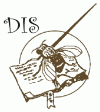



Burdick, A.B. 1999. Xasta in class experiments.
Dros. Inf. Serv. 82: 128-129. View PDF
Goldschmidt, Elisabeth. 1999. Phenocopy and species hybrid in class work.
Dros. Inf. Serv. 82: 129. View PDF
 Good, clear, uncomplicated translocation segregation data is difficult
to obtain in Drosophila. Most translocations
are not well marked and multichromosomal recessive testers frequently conflict
in expression with translocation markers. One combination that has worked well for
us is T(2;3)Xa with m;cn;e. We cross
m;cn;e females X T(2;3)Xa/Ubx130
males and backcross: m/+; cn-e/T(2;3)Xa females X; m;cn;e males.
Typical backcross data are those of Mr. V.M. Sahni, last year (Table
1). We never obtain any recombination between
cn and e which is unfortunately due to the fact that Xa also carries In(2R)Cy, which covers cn, and In(3R)P with a break near e. This prevents location
of the break-points of Xa from
the data and leads everyone to conclude that the breaks must be very close
to both cn and e. I think the recessive tester stock could
be improved by making it B;cl;ssa which should give some recombination between
cl, ssa, and Xa to allow genetic estimation of the break-points.
Good, clear, uncomplicated translocation segregation data is difficult
to obtain in Drosophila. Most translocations
are not well marked and multichromosomal recessive testers frequently conflict
in expression with translocation markers. One combination that has worked well for
us is T(2;3)Xa with m;cn;e. We cross
m;cn;e females X T(2;3)Xa/Ubx130
males and backcross: m/+; cn-e/T(2;3)Xa females X; m;cn;e males.
Typical backcross data are those of Mr. V.M. Sahni, last year (Table
1). We never obtain any recombination between
cn and e which is unfortunately due to the fact that Xa also carries In(2R)Cy, which covers cn, and In(3R)P with a break near e. This prevents location
of the break-points of Xa from
the data and leads everyone to conclude that the breaks must be very close
to both cn and e. I think the recessive tester stock could
be improved by making it B;cl;ssa which should give some recombination between
cl, ssa, and Xa to allow genetic estimation of the break-points.
The following simple experiments are familiar to geneticists from the literature, but it is not generally realized how easily their success in class work can be ensured.
a) “Yellow” phenocopy on silver nitrate medium. Medium containing 0.1%, 0.05%, and 0.025% AgNO3, respectively, is prepared by stirring appropriate volumes of a 5% AgNO3 solution into standard food mixture cooled to 60°C directly after boiling. Since stocks vary in their sensitivity to the salt, the concentration which produces a high percentage of phenocopies (50-80%) without being too toxic to the flies is determined each year by a test series before starting the course. At least 10 pairs of parents should be introduced into each half-pint bottle. Students test different isogenic strains (or different Drosophila species) on the same medium or one stock on a series of concentrations. Light-colored flies are transferred to normal medium to demonstrate nonheritability of the effect in their offspring.
b) Hybrid D. melanogaster X D. simulans. Virgin males and females, aged for different periods, are shaken without etherizing into “creamers”, according to the method described by Uphoff (Genetics 34: 314-327). Thirty to fifty percent of students’ crosses prepared in this way are fertile. Hybrid larvae are utilized for salivary preparations to demonstrate the inversion constituting the main cytological difference between the parent species. Adult female hybrids are tested for sterility. Change of dominance relations in the hybrid can be demonstrated by utilizing melanogaster females carrying dominant genes. Thus, when employing Cy L/Pm females, Cy is found to be dominant, while L and Pm are recessive in the hybrids.